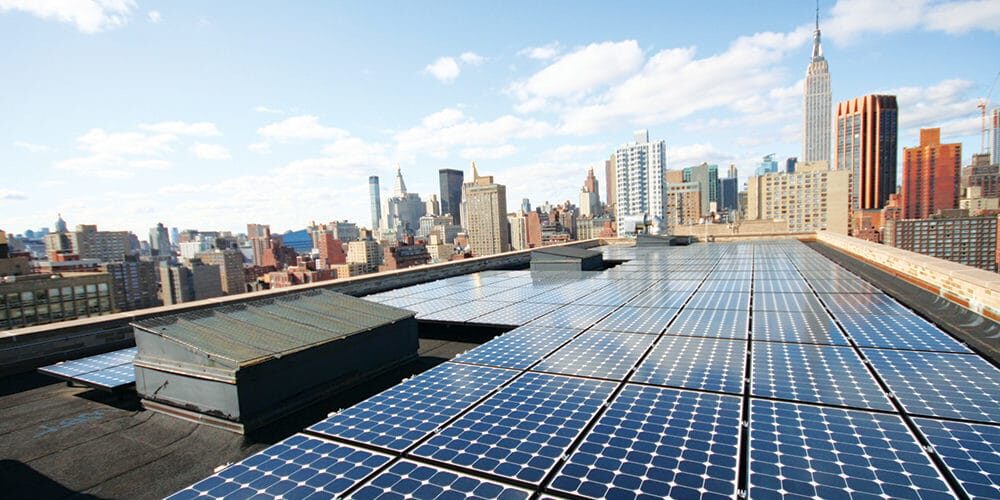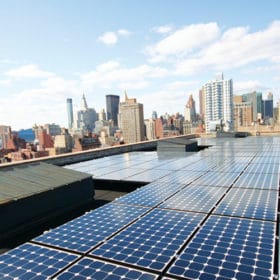As clean energy professionals, we’re rightfully proud of the rapid progress being made in deploying solar, wind, and battery storage technologies. The plummeting costs and increasing efficiencies of renewables mean that greening the grid by 2050 is now a realistic goal. This is cause for celebration.
However, we must also reckon with an inconvenient truth: even if we achieve 100% clean electricity by mid-century, atmospheric CO2 levels are still on track to reach around 450 parts per million (ppm) by 2050 – far above the 350 ppm level considered safe for humanity. The painful reality is that the clean energy transition, while absolutely necessary, is not sufficient on its own to avert climate catastrophe.
This is the stark message of Peter Fiekowsky’s recent book Climate Restoration, which argues that we must go beyond emissions reductions to actually remove a trillion tons of legacy CO2 from the atmosphere. Only by restoring CO2 to pre-industrial levels below 300 ppm can we ensure the long-term survival and flourishing of human civilization.
Fiekowsky, an MIT-educated physicist and entrepreneur, contends that relying solely on emissions cuts to stabilize CO2 around 450 ppm is far too risky. Humans have never lived long-term with CO2 that high. The last time levels were similar was over 3 million years ago, when sea levels were 60 feet higher and global temperatures 5-8°F warmer. Allowing CO2 to remain elevated for centuries risks crossing irreversible tipping points in the climate system.
The good news is that CO2 removal at the necessary scale is technologically feasible and surprisingly affordable, costing an estimated $1-2 billion per year. Fiekowsky identifies four main approaches that could restore atmospheric CO2 to safe levels by 2050:
- Ocean iron fertilization to stimulate plankton blooms that absorb CO2
- Seaweed permaculture to grow and sink carbon-sequestering kelp
- Synthetic limestone manufacture using captured CO2
- Enhanced atmospheric methane oxidation
These nature-based and biomimicry solutions harness and accelerate the Earth’s natural carbon cycle processes. Importantly, they are permanent, scalable, and financeable – key criteria for viable CO2 removal approaches. When you consider that New York City (just one major coastal metro) is currently debating whether to spend $20 to $50 billion dollars on an ocean barrier system to prevent future storm surges from flooding the city, the $2 billion/yr price tag on climate restoration seems like a better bet.
As clean energy professionals, we must expand our focus beyond just greening the grid to include large-scale carbon removal. Here’s why:
First, it’s a moral imperative. We have an obligation to restore a safe, stable climate for future generations. Stopping emissions is necessary but not sufficient – we must clean up the trillion-ton legacy CO2 mess we’ve already created.
Second, it’s risk mitigation. Relying solely on emissions cuts without CO2 removal is an enormously risky bet on humanity’s ability to thrive in a radically altered climate state. Carbon removal gives us vital insurance.
Third, it’s economic opportunity. CO2 removal solutions like synthetic limestone can produce valuable products, creating new industries and jobs. The transition to a circular carbon economy will require major infrastructure investments.
Fourth, it’s technically synergistic. Many carbon removal approaches like ocean fertilization or seaweed cultivation could be powered by offshore wind or floating solar, creating virtuous cycles.
To be clear, carbon removal is not an excuse to slow down the clean energy transition – both are essential. But the clean energy community must broaden its vision to champion carbon removal alongside renewables deployment.
Specific actions we can take include:
- Advocate for updating climate policy goals to include restoring CO2 to pre-industrial levels (300 PPM of CO2 is worthy goal), not just emissions cuts
- Support R&D funding and commercial deployment of CO2 removal solutions
- Explore integrating carbon removal with renewable energy projects
- Educate ourselves and others on the need for atmospheric CO2 cleanup
The coming decades will be pivotal for humanity’s future. By combining a rapid shift to 100% clean energy with large-scale deployment of carbon removal solutions, we can create a true climate restoration future – one with a healthy, livable planet for generations to come. But we must act quickly and decisively. The clean energy industry has shown it can innovate and scale rapidly when needed. Now we must apply that same spirit to carbon removal. Our children’s future depends on it.

Tim Montague leads the Clean Power Consulting Group and is host of the Clean Power Hour podcast. He is a solar project developer, cleantech executive coach and consultant, mastermind group leader, entrepreneur and technology enthusiast.
The views and opinions expressed in this article are the author’s own, and do not necessarily reflect those held by pv magazine.
This content is protected by copyright and may not be reused. If you want to cooperate with us and would like to reuse some of our content, please contact: editors@pv-magazine.com.








By submitting this form you agree to pv magazine using your data for the purposes of publishing your comment.
Your personal data will only be disclosed or otherwise transmitted to third parties for the purposes of spam filtering or if this is necessary for technical maintenance of the website. Any other transfer to third parties will not take place unless this is justified on the basis of applicable data protection regulations or if pv magazine is legally obliged to do so.
You may revoke this consent at any time with effect for the future, in which case your personal data will be deleted immediately. Otherwise, your data will be deleted if pv magazine has processed your request or the purpose of data storage is fulfilled.
Further information on data privacy can be found in our Data Protection Policy.